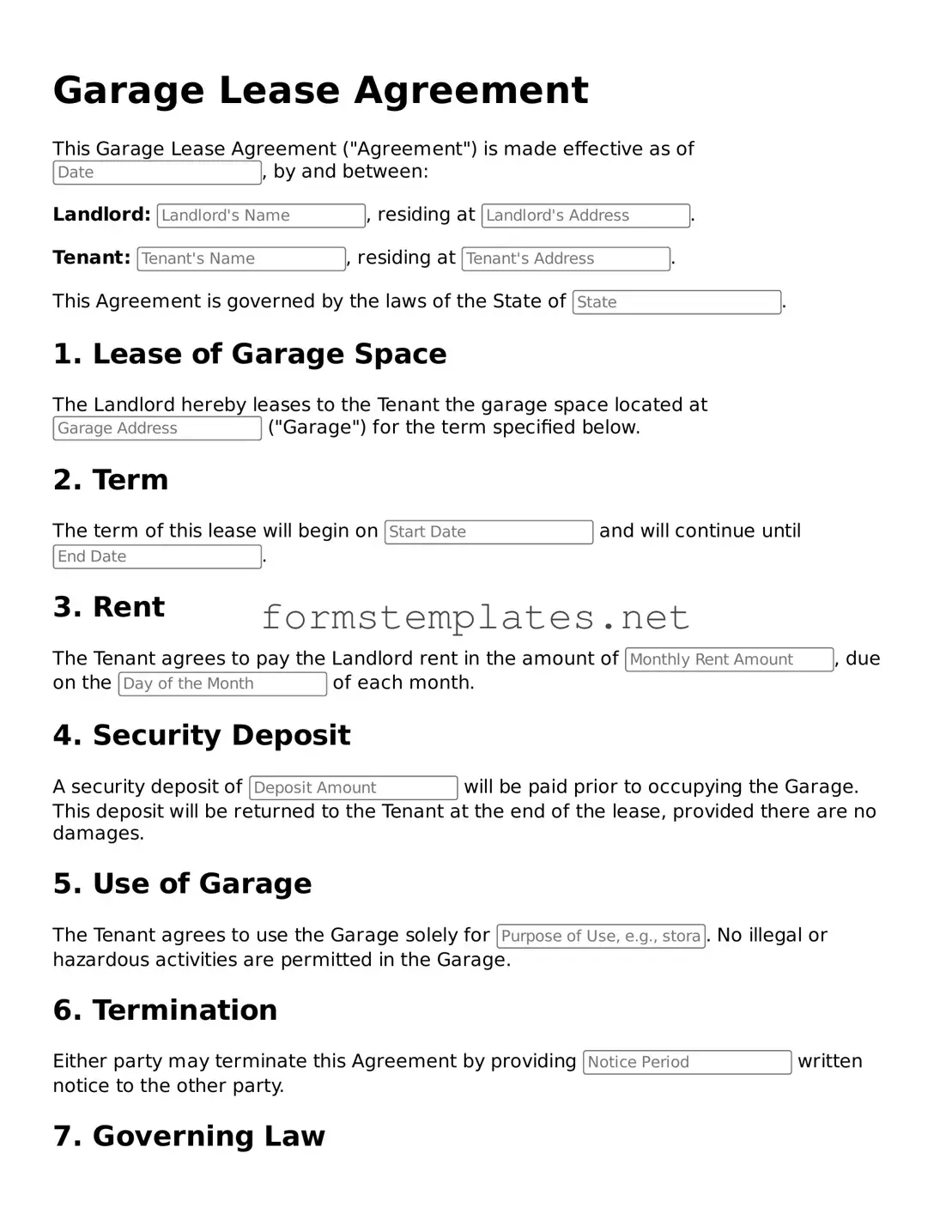Attorney-Verified Garage Lease Agreement Form
A Garage Lease Agreement is a legal document that outlines the terms and conditions under which one party rents a garage space from another. This agreement protects the rights of both the landlord and the tenant, ensuring clarity on rental payments, duration, and responsibilities. Understanding this form is essential for anyone looking to lease or rent a garage space effectively.
Open Editor Now
